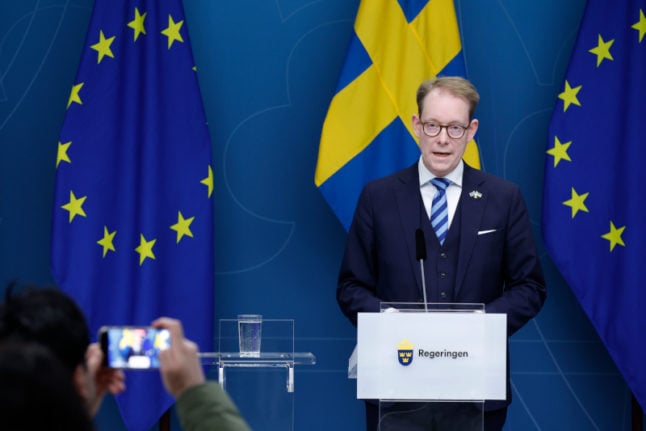Finland became the 31st member of the military alliance after securing the last two ratifications needed from Hungary and Turkey last week.
Finland and Sweden abandoned decades of military non-alignment and applied to join Nato in the wake of Russia’s invasion of Ukraine, stressing they wanted to walk in lockstep.
But Ankara and Budapest have refused to ratify Sweden’s bid, following a litany of disputes.
Whether the delay becomes a real problem depends on how long it lasts, according to experts.
“If we are talking about months, it’s embarrassing, but not really a major problem,” Robert Dalsjö, an analyst at the Swedish Defence Research Institute (FOI), told AFP.
However, should the process drag on, it could complicate both Sweden’s and Nato’s defence planning in the region.
Jacob Westberg, an associate professor of War Studies at Sweden’s Defence University, noted that it isn’t possible for “non-member states to fully participate in Nato’s defence planning”.
That leaves Sweden out of action.
For example, if military supplies needed to be quickly deployed to the Baltic states and Finland, east of the Baltic Sea, “then it would be very practical to be able to operate out of Swedish territory”, Westberg said.
He added that a delay also means that Nato will not be able to count on Swedish military assets – such as its fleet of submarines in the Baltic Sea and Jas Gripen fighter jets.
Analysts have long pointed to Sweden’s geographical significance in the event of a conflict in Northern Europe, with the island of Gotland sometimes described as an “unsinkable aircraft carrier” in the Baltic.
Cracks
In addition to planning woes, Anna Wieslander, director for Northern Europe at the think tank Atlantic Council, said the disagreement on Sweden could expose cracks within the alliance.
“If Nato doesn’t deliver on Sweden becoming a member, then Nato will appear weakened,” Wieslander said.
Lingering divisions could ultimately affect how Nato supports Ukraine, she added.
“That which has been the alliance’s greatest strength… in the Ukraine crisis, has been that members can move forward together and remained united,” Wieslander said.
New members need to be unanimously ratified by all members of the alliance, and Sweden still faces opposition from Ankara and Budapest.
It has especially angered Turkey by refusing to extradite dozens of suspects that President Recep Tayyip Erdogan links to a failed 2016 coup attempt and a decades-long Kurdish independence struggle.
Nato diplomats hope Erdogan will become more amenable if he weathers elections next month.
‘Look at the map!’
In a speech in late March, Sweden’s Prime Minister Ulf Kristersson said his country was “safer with Finland inside” Nato.
“Look at the map! We’ll be surrounded by Nato countries,” Kristersson said, stressing the security assurances also offered by several Nato members, including the United States and Britain.
As a non-member, Sweden is not covered by the security guarantees of Nato’s Article 5 on collective defence.
Westberg also noted that Kristersson’s evaluation clashed with the one Sweden’s parliament presented in a security policy assessment before applying to Nato, which specifically highlighted the risks that Sweden would face if only Finland applied.
As the only Nordic country outside Nato, Sweden would become a “specific military strategic interest for Russia in the event of a conflict”.
“Our military and security policy vulnerability, and exposure, would increase,” the report said.
In particular, Westberg noted that the common defence planning between Sweden and Finland that has developed since 2014 would not be able to continue in “the same way”.
As a Nato member, Finland will have to prioritise its obligations towards the alliance, Westberg explained.
While Sweden has some 200 years’ experience of staying out of military alliances, the researcher also noted that the country does not have nearly the military capabilities it had during the Cold War.
In the 1950s, Sweden had a defence budget totalling around four percent of its GDP, discouraging a potential attack from the Soviet Union by making it too costly.
Following decades of cuts, the country is once again rearming, but to a lesser degree. Last year, Sweden announced plans to boost spending to two percent of GDP “as soon as possible”.



 Please whitelist us to continue reading.
Please whitelist us to continue reading.
Member comments